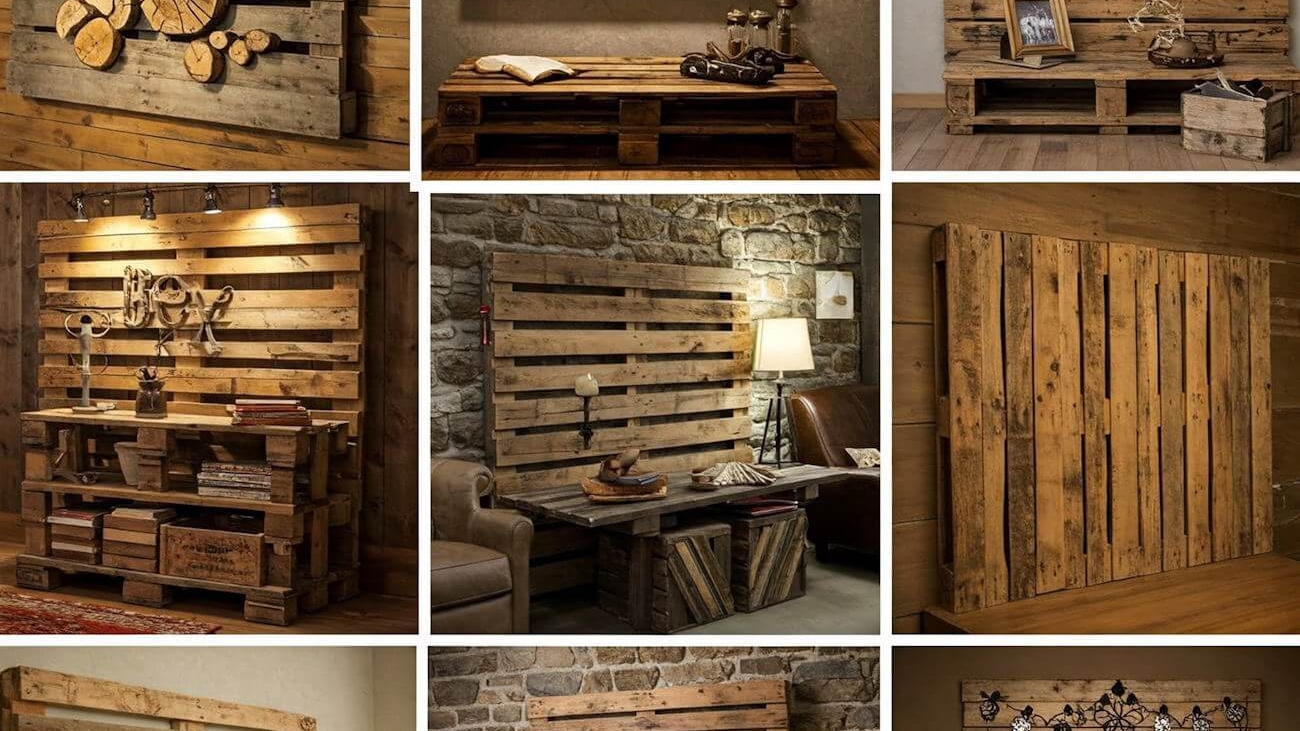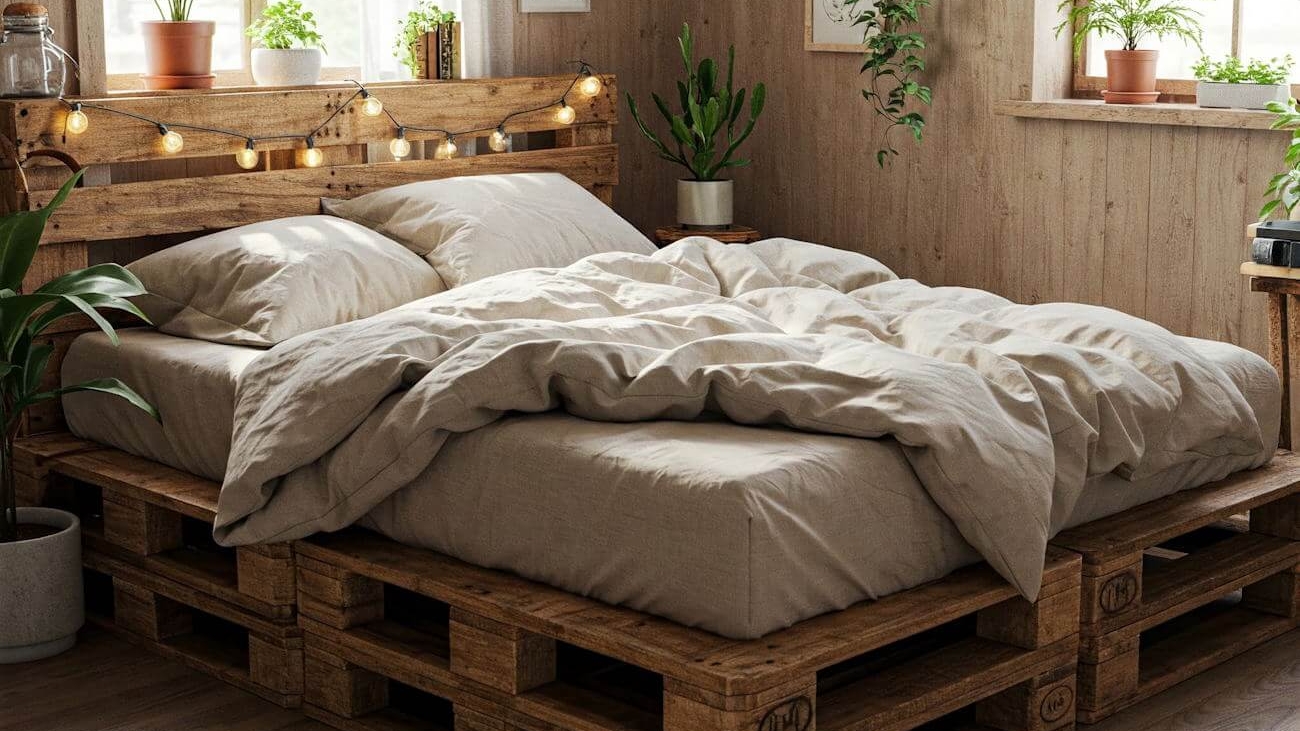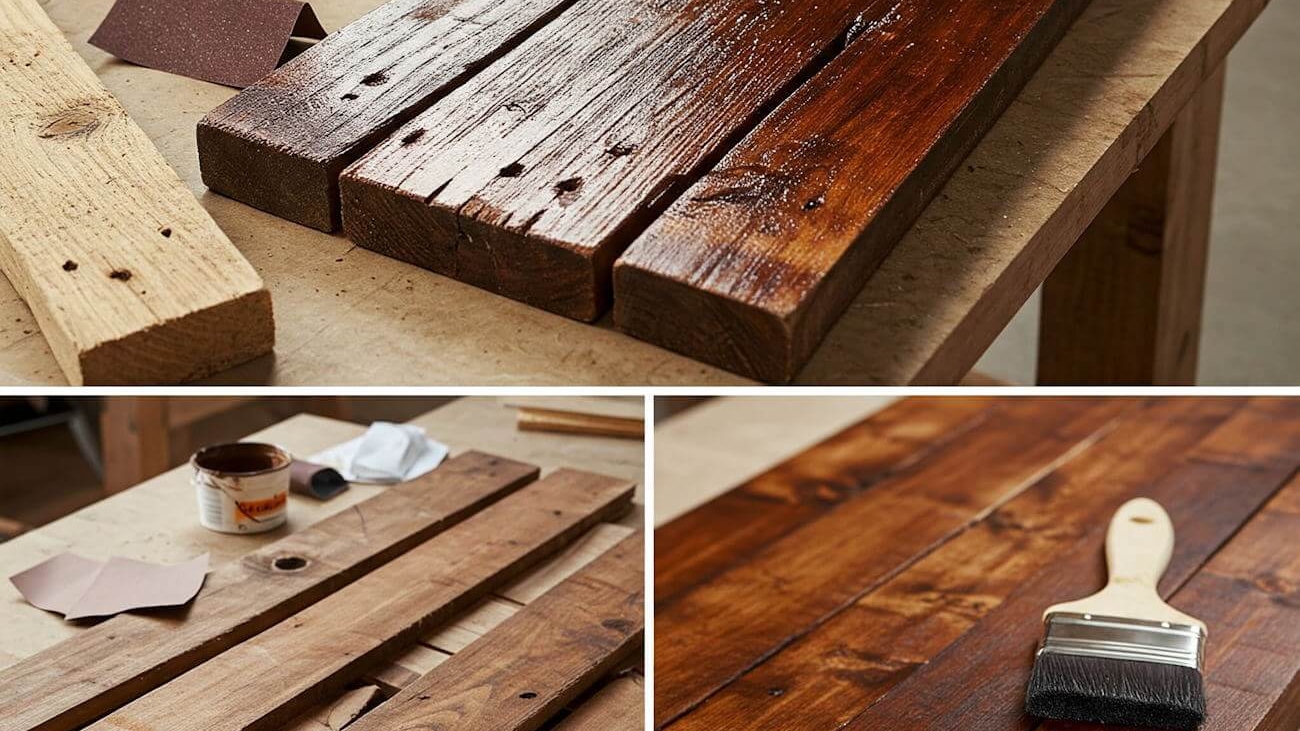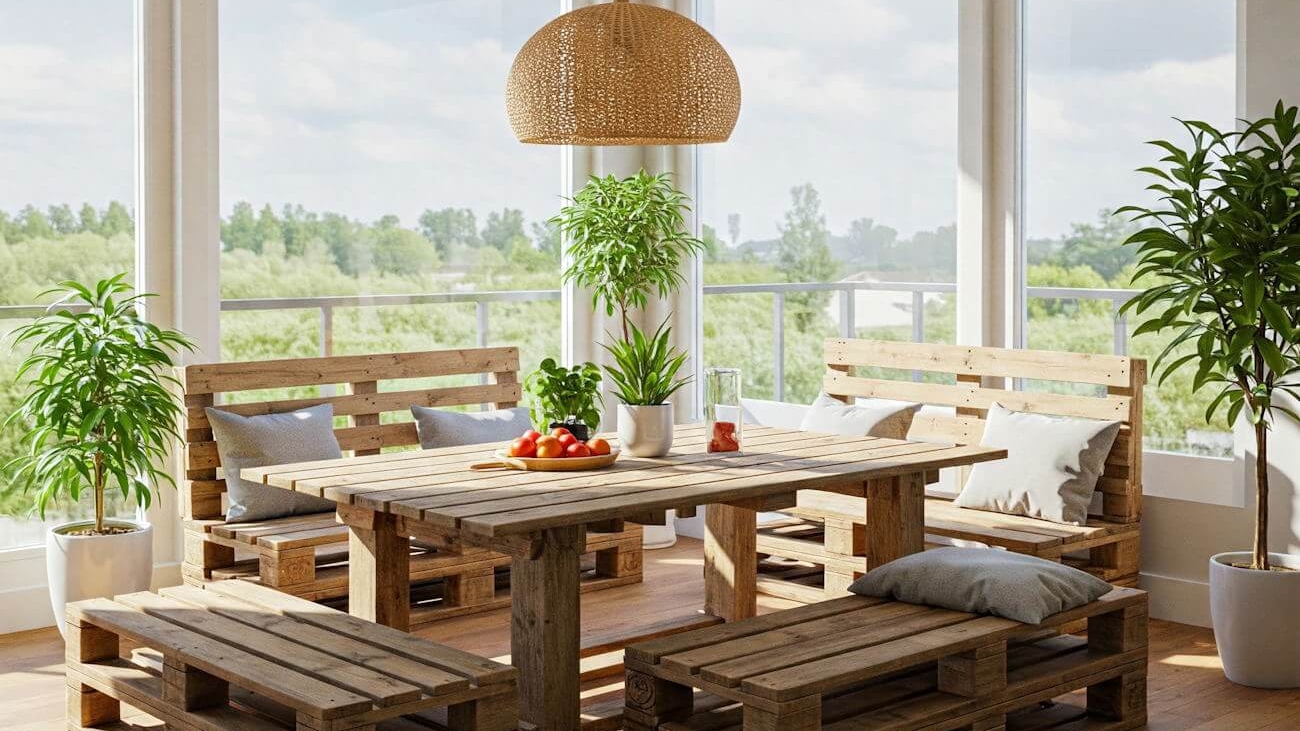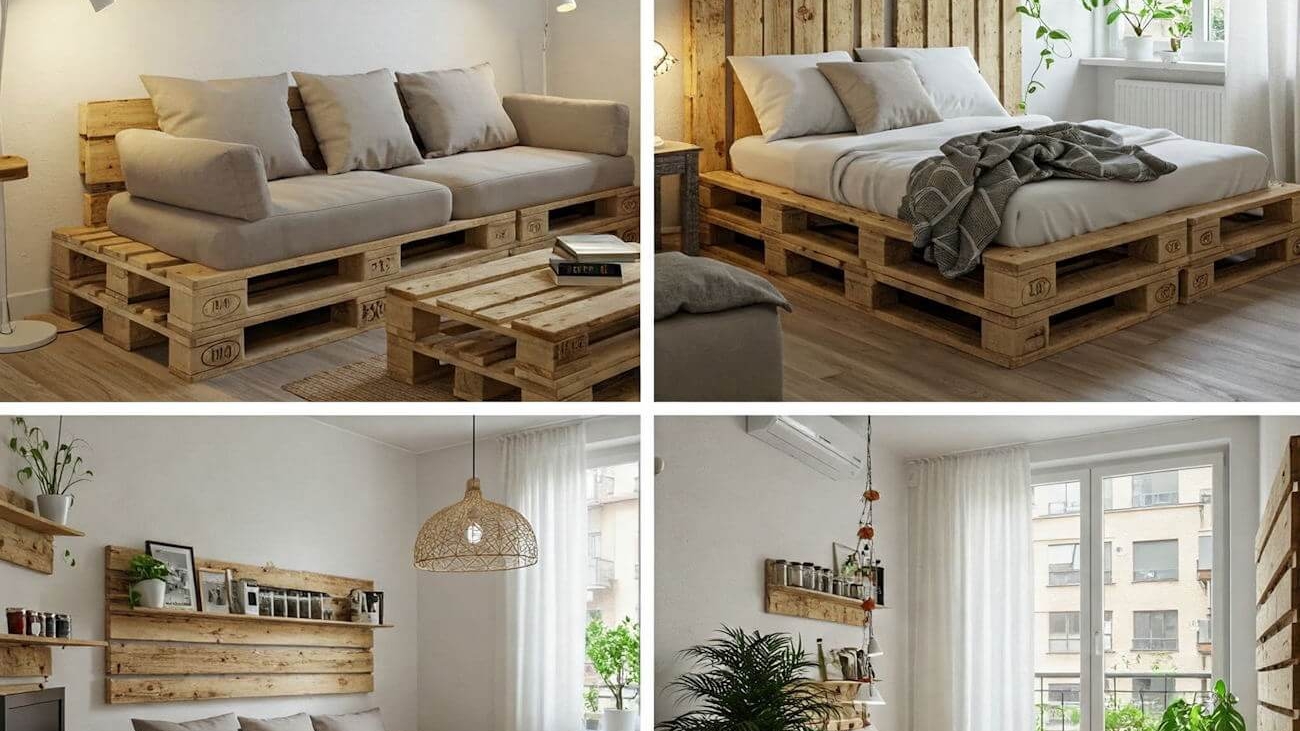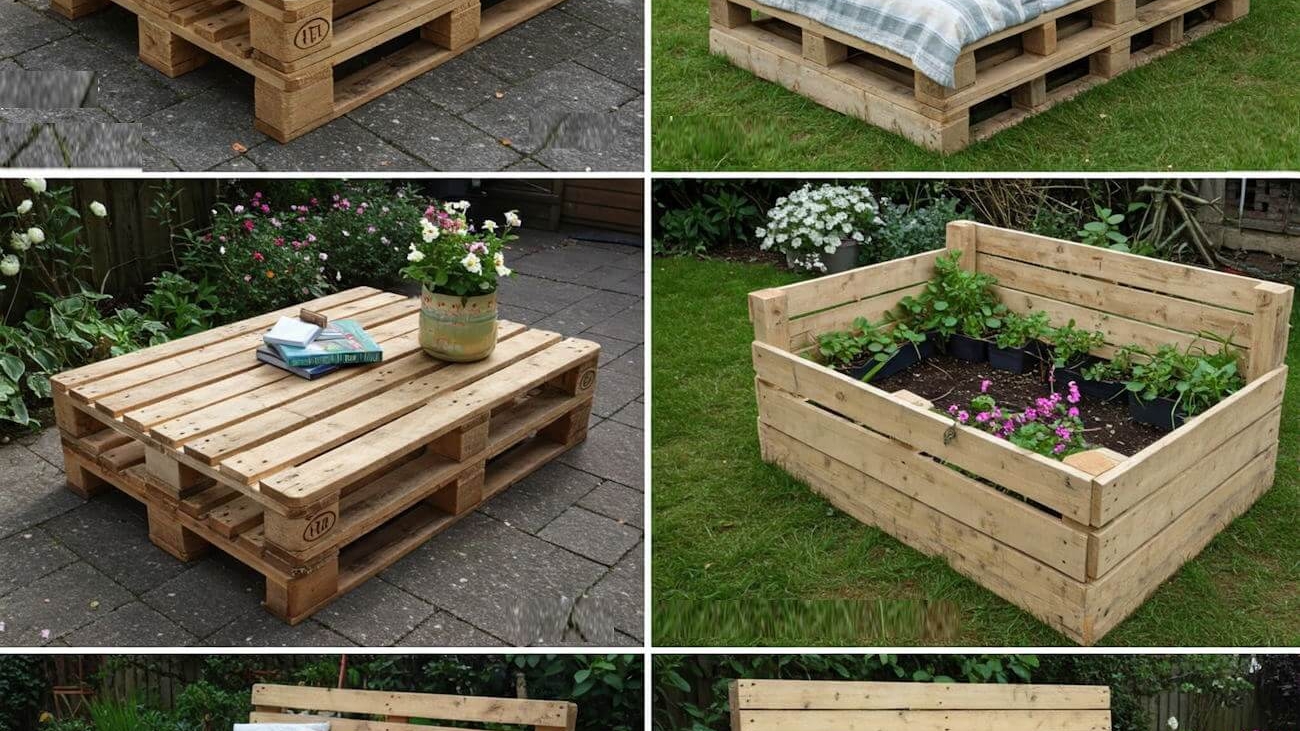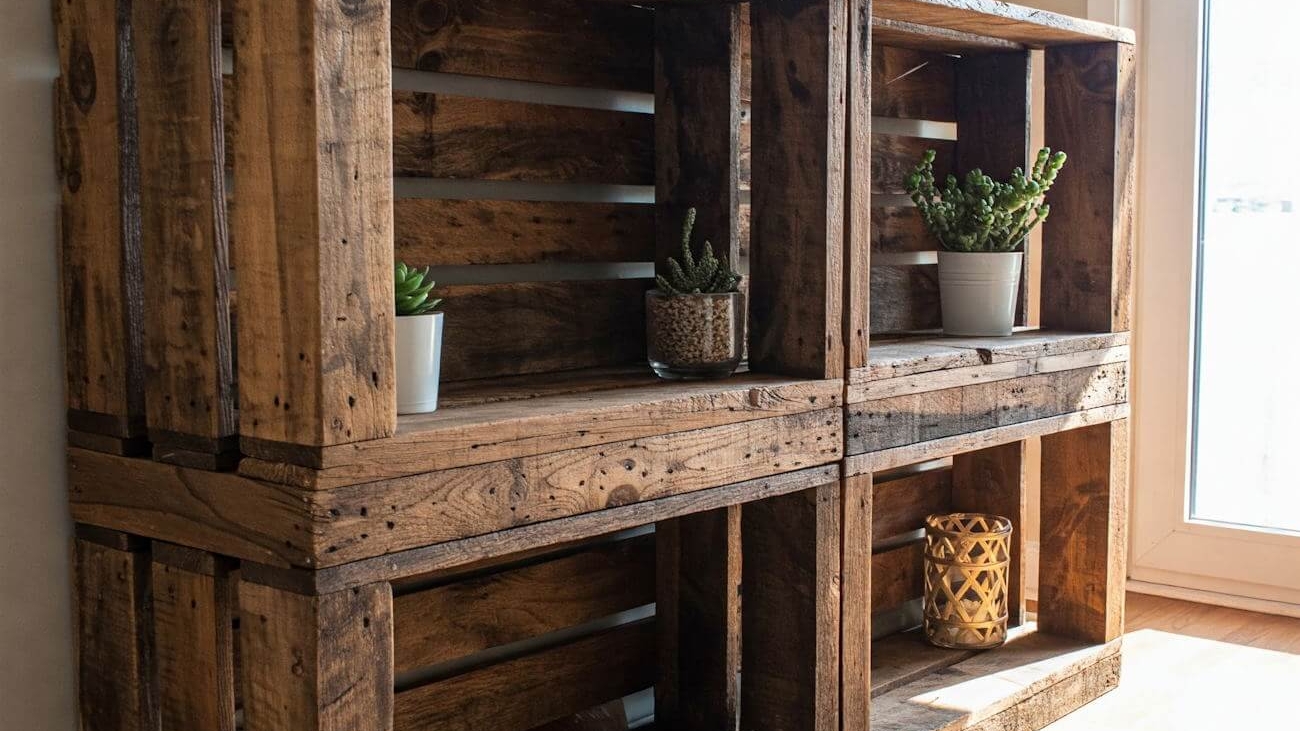Introduction to Pallet Wall Art
Pallet wall art has emerged as a popular trend in rustic interior design, appealing to those who appreciate creativity and sustainability in home decor. Utilizing wooden pallets as the foundational material for art pieces and decorations allows individuals to infuse their spaces with unique charm, while also promoting eco-friendly practices. The organic textures and weathered finishes of pallet wood bring a warm, rustic ambiance that can complement a variety of interior styles.
One of the most significant advantages of pallet wall art is its cost-effectiveness. Wooden pallets can often be sourced at little to no cost, making them an accessible option for DIY enthusiasts and budget-conscious homeowners. This affordability not only makes it easier to experiment with various designs and concepts but also empowers individuals to personalize their spaces without breaking the bank. Whether it involves a large statement piece or a series of smaller accents, pallet wall art can be tailored to fit any budget.
Sustainability is another crucial aspect of pallet wall art. In a time where environmental consciousness is increasingly prioritized, repurposing pallets into functional decor items offers an eco-friendly solution to interior design. This practice minimizes waste by giving new life to materials that might otherwise be discarded. As a result, creating art from pallets not only beautifies interiors but also contributes to a more sustainable lifestyle.
In summary, pallet wall art serves as a captivating medium for those looking to enhance their rustic interiors. Its blend of cost-effectiveness, sustainability, and unique aesthetic appeal makes it a favored choice among home decorators and artisans alike. As this trend continues to grow, more individuals are likely to explore the endless creative possibilities that pallets offer in transforming their spaces.
Choosing the Right Pallet
When embarking on a rustic interior decor project utilizing pallet wall art, it is essential to choose the right pallet to achieve optimal results. The first factor to consider is the size of the pallet. Pallets come in various dimensions, with the standard size being 48 x 40 inches. However, other sizes such as 48 x 48 inches or smaller variants may also be available. Selecting the appropriate size ensures that your design aligns with the overall aesthetic of the space and fits well within the intended wall area.
The type of wood used in pallets is another crucial element. Common wooden pallets are typically made from pine, oak, or birch, each possessing distinct characteristics and appearances. Pine pallets tend to be lightweight and easy to work with, while oak and birch provide durability and a more refined finish. For rustic interiors, pallets with a weathered look or those that have been treated with an aged finish can enhance the overall charm and authenticity of your decor.
Furthermore, evaluating the condition of the pallet is vital for safety and longevity. Before selecting a pallet, inspect it for any visible signs of damage, such as cracks or splinters. Additionally, ensure that it has not been treated with harmful chemicals or pesticides, which can pose health risks. Look for pallets marked with the HT (heat-treated) stamp or those that have been made in compliance with safety standards. This strategy will guarantee that the pallet is safe for use in your home decor projects.
Lastly, consider mixing different wood types and finishes to add depth and dimension to your projects. By thoughtfully selecting the right pallets, one can create striking wall art that contributes to the overall rustic atmosphere of the interior.
Preparation and Treatment of Pallets
When embarking on a creative journey with pallet wall art and decor, the first step lies in the preparation and treatment of the pallets. Properly preparing the wood not only enhances the aesthetic appeal but also ensures durability and safety for your projects. Start by selecting high-quality pallets that are free from significant damage; inspect them for any broken boards or protruding nails.
Once you have chosen your pallets, the next step is to clean them thoroughly. Use a mixture of warm water and mild detergent to remove dirt, dust, and any potential contaminants. A soft scrub brush can help with stubborn residue, but avoid overly aggressive cleaning methods that could damage the wood. After washing, let the pallets dry completely to prevent moisture buildup, which can lead to mold and decay.
Sanding the wood is crucial for achieving a smooth surface and preparing it for finishing. Begin with coarse-grit sandpaper to remove splinters and rough spots, then progress to finer grits for a polished look. This process not only enhances the visual appeal but also creates a safer surface for handling and applying finishes. Be meticulous in your sanding, paying particular attention to the edges and corners of the pallets.
Finally, treating the wood with a suitable finish will help preserve the rustic charm while extending the life of your pallet decor. Consider using a non-toxic wood sealant or stain that will protect against environmental factors while maintaining the raw, natural look of the pallets. Depending on your design, options may range from clear sealants that enhance the wood’s grain to colored stains that align with your interior aesthetic. Overall, taking the time to properly prepare and treat your pallets is an essential undertone of creating beautiful and long-lasting pallet wall art.
Creative Pallet Wall Art Ideas
Pallet wall art offers an exceptional opportunity to infuse rustic charm into your interior design. By transforming functional pallets into captivating art pieces, you can create a unique focal point that reflects your personal style and brings warmth to your space. Here are some innovative ideas to inspire your creativity.
One popular approach is to paint the pallets with vibrant colors or subtle pastels depending on your decor. Using stencils or freehand techniques, you can personalize the surface with quotes, patterns, or artistic designs. This method not only gives an artistic touch but also enhances the aesthetic appeal of the room. Another intriguing option is using a wood stain to emphasize the natural grain of the wood while allowing the textures to shine through.
Incorporating different materials can further elevate your pallet wall art. Tying in fabrics like burlap, lace, or canvas can add an appealing texture that contrasts nicely with the wooden pallets. Consider attaching small, woven baskets or even hanging planters to the pallet structure, creating functional art that draws the eye and serves a purpose.
You might also explore the idea of themed art pieces. Imagine creating a rustic representation of a favorite landscape or a seasonal theme by arranging and decorating various pallets to fit the concept. For instance, a beach theme could incorporate light colors, seashell motifs, and gentle wave patterns, while a forest theme could utilize earthy tones, natural embellishments, and perhaps even integrated lighting for a cozy ambiance.
Overall, pallet wall art can be a form of self-expression that not only enhances your rustic interior but also tells a story. Embrace your artistic side and experiment with various techniques and materials to create standout pieces that transform your living space.
Functional Decor Items from Pallets
Utilizing pallets for decor presents a myriad of opportunities, particularly in creating functional items that enhance the rustic aesthetic of interior spaces. These versatile wooden structures can be transformed into various pieces that are not only practical but also add a distinctive charm to any room.
One popular option is the conversion of pallets into shelving units. By disassembling pallets and reconfiguring the wood, one can create custom shelves that suit the specific dimensions and style of a room. These shelves can be mounted on walls or freestanding, and they offer an excellent platform for displaying books, plants, or decorative items. The natural wood texture complements rustic themes, drawing attention while maintaining functionality.
Another innovative use of pallets is in the construction of racks. Whether it’s a wine rack or a shoe rack, pallets can be adjusted and painted to fit the desired look and purpose. For instance, a wine rack made from pallets can serve as both a holder for wine bottles and a unique centerpiece for a dining area or kitchen. This type of decor demonstrates how rustic materials can support modern convenience without sacrificing style.
Benches made from pallets are also an attractive and practical decor item. Simple designs can be implemented to create cozy seating options for indoor or outdoor spaces. These benches can be styled with cushions or left bare to highlight the raw aesthetic of the wood. Such pieces not only provide seating but also evoke a warm, welcoming atmosphere that aligns with rustic interior design principles.
In summary, repurposing pallets into functional decor items can significantly enhance the character and utility of a space. By leveraging their inherent rustic charm, homeowners can enjoy both aesthetic and practical benefits, making pallets an ideal choice for functional, decorative elements in interior design.
Incorporating Pallet Art into Different Rooms
Pallet wall art offers a versatile and rustic charm that can seamlessly enhance the aesthetic of various rooms in a home. When considering how to effectively incorporate this type of decor, it is essential to bear in mind the distinct characteristics of each space. In the living room, pallet art can serve as a compelling focal point, with large pieces displaying intricate designs or natural wood grain. For instance, a pallet wood mural above a sofa can add depth and warmth, complementing existing furnishings. Choose a color scheme that aligns with the upholstery and overall room palette to create a harmonious look.
In kitchens, the playful nature of pallet art can be utilized effectively by incorporating smaller pieces. Consider artwork that reflects culinary themes, such as wooden signs displaying favorite recipes or witty kitchen-related quotes. These eye-catching elements can be hung above countertops or integrated into shelving units. The natural textures of the pallets can also soften modern appliances and create an inviting atmosphere.
For bedrooms, pallet wall art can evoke a cozy and restful environment. Opt for softer color tones or artwork that inspires tranquility. Framed pallet art can be hung above the bed or used to create a gallery wall featuring personal photographs. This combination not only enhances the decor but also adds a personal touch to the space.
Outdoor spaces, such as patios or gardens, can also benefit from pallet art. Weather-resistant pieces can be hung on fences or mounted on garden walls, showcasing themes related to nature or outdoor living. Incorporating whimsical designs such as pallet planters improves functionality while maintaining the rustic allure. Throughout these various settings, striking a balance between pallet art and existing decor is key to achieving a unified and inviting atmosphere in the home.
DIY Pallet Projects for Beginners
Creating stunning decor for your rustic interiors can be as simple as utilizing pallets. These versatile, reclaimed building materials provide a unique charm and character to any space. Here, we present beginner-friendly DIY projects that demonstrate how even novice crafters can transform pallets into impressive décor pieces. From the initial selection of pallets to the finishing touches, these projects are achievable and enjoyable.
One of the easiest projects to begin with is a pallet wooden sign. Start by selecting a single pallet board; ensure it is clean and free from any unwanted debris or contaminants. Using a saw, carefully cut the board to your desired size. Next, sand the edges and surface to achieve a smooth finish. Once prepped, you can paint the sign using rustic-colored paints, perhaps incorporating inspirational quotes or seasonal greetings. This simple project can enhance your space and serve as a personal touch to your decor.
Another accessible option is a pallet planter box, perfect for adding greenery to your interiors. Begin by disassembling a pallet into individual slats. Using these slats, construct a rectangular frame by securing them with nails or screws. Ensure there are drainage holes at the bottom to prevent water stagnation. Once completed, stain or paint the planter to match your aesthetic. Fill it with soil and your choice of plants, and watch as it livens up your rustic space.
Lastly, consider creating a pallet coat rack, which is both functional and stylish. Cut the pallet to the desired length and attach hooks suitable for coats or hats. Sand the surface and finish with a coat of protective varnish for longevity. Mount it at an accessible height near your entryway for maximum convenience. Through these projects, beginners can experience the rewarding process of crafting rustic decor using pallets, proving that even simple materials can produce beautiful, functional pieces in a home.
Advanced Pallet Art Techniques
For those who have mastered the basics of pallet art, exploring advanced techniques can elevate your projects to new heights. One effective method involves creating more complex designs that go beyond simple wood structures. For instance, consider layering various pallet pieces to create a three-dimensional effect. This technique can add depth and texture, making the artwork more visually engaging.
Additionally, incorporating mixed media into your pallet art can significantly enhance its appeal. Using materials such as paint, fabric, metal, or even glass can introduce an intriguing contrast against the rustic wood. A popular approach is to paint vivid landscapes or abstract designs directly onto the pallets, which can breathe life into an otherwise simplistic piece. Experimenting with color gradients, stencils, or even decals opens up a world of creativity and personalization.
For larger installations, consider using multiple pallets to craft bold statements that dominate a space. Artistic configurations can transform entire walls, turning an area into a focal point of the room. For example, a large-scale piece arranged in a geometric pattern can become an eye-catching feature that invites conversation. Securely fastening your pallets to the wall is essential for ensuring durability, especially for bigger artworks. Additionally, alterations such as varying the orientation, stacking, or integrating lighting can dramatically change how the piece interacts with its surroundings.
Finally, the incorporation of eco-friendly finishes, like natural oils or stains, not only preserves the rustic charm of the pallets but also promotes sustainability. This combination of advanced techniques can culminate in striking and environmentally conscientious artwork that enhances any rustic interior. The possibilities are vast, offering a rewarding creative outlet for enthusiasts ready to take their pallet art skills to the next level.
Maintenance and Upkeep of Pallet Art
Proper maintenance and upkeep of pallet wall art is essential to ensure the longevity and visual appeal of these rustic decor pieces. Given that pallet art is primarily constructed from reclaimed wood, it can be particularly susceptible to various forms of wear and deterioration over time. Regular cleaning is a straightforward yet effective way to keep your pallet art looking its best. To clean your pallet art, use a soft, dry cloth to gently wipe away dust and debris. For more stubborn stains, a damp cloth with a mild soap solution can be employed; however, be careful not to saturate the wood, as excess moisture can lead to warping or other damage.
In addition to routine cleaning, it is crucial to monitor your pallet wall art for any signs of deterioration. Wooden surfaces may develop cracks or splinters over time, particularly if exposed to varying humidity levels. If such issues arise, it’s recommended to address them promptly. Small cracks can be filled using wood filler, followed by sanding to achieve a smooth finish. Protecting your pallet art from direct sunlight is also advisable, as prolonged exposure can lead to fading or discoloration. Installing the artwork in a shaded area may help preserve its vibrant colors.
To refresh the aesthetic appeal of your pallet decor, consider re-finishing it every few years. This process may involve sanding down the surface lightly and applying a fresh coat of stain or sealant designed for wood. Not only does this enhance the visual characteristics of the pallet art, but the protective coating also serves to guard against future deterioration. By following these maintenance tips, you can ensure that your pallet wall art remains a charming focal point in your rustic interior for years to come.

